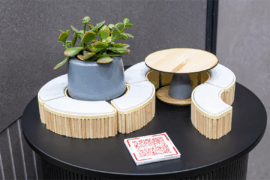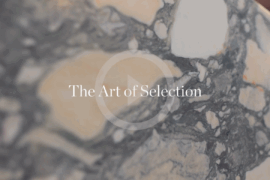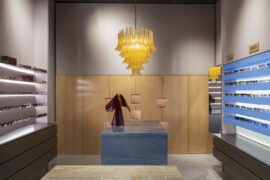Davenport Campbell’s Neill Johanson shares insights from WORKTECH25 and the impact of AI on the workplace experience.

Neill Johanson, Principal at Davenport Campbell.
June 27th, 2025
With the support of AI, are we ready to move away from the relatively static environments we deemed ‘future-proof’ and embrace the continual and natural evolution that AI offers? What if the workplace of the future doesn’t just support your work, but understands it, anticipates it and even evolves with it?
It’s not science fiction anymore, it’s the next frontier of workplace design. And for something as seemingly unnatural as AI, suddenly it feels like the natural progression of our hopes for a ‘future-proof’ workplace. At WORKTECH25 conferences across the globe, and recently in Melbourne, a new narrative has emerged. Workplace design has moved beyond space efficiency, productivity and flexibility. It’s about designing intelligent ecosystems – where architecture, data, psychology and culture collide to create environments that are alive, adaptive and deeply human-centric.

Welcome to the sentient workplace
As workplace designers, the most compelling idea to come out of the Smart Technologies25 conference in London was of the ‘sentient workplace’; the potential for environments to sense, perceive and adapt to meet physical and emotional criteria.
Think of a workplace that learns from you. Sensors and AI collaborate behind the scenes to adjust lighting, temperature and acoustics in real time based on how you’re working and how you’re feeling. Your calendar, your workload and even your stress levels feed a system that fine-tunes your environment to help you thrive.
Far beyond smart buildings – this is emotional intelligence embedded in architecture. It’s the physical manifestation of digital empathy (Psychology Today 2025).

A curated workplace experience
As hybrid working becomes the default workstyle, the office can no longer survive as a place to sit.
Driven by new generations, family and lifestyle goals, and post-pandemic expectations, our fresh understanding demands that it be a destination – rich in storytelling, culture and community. Inspired by hospitality, museums and even theme parks, tomorrow’s workplaces are being curated like exhibitions. We won’t just ‘go to work’ – we will enter an experience that’s been designed to spark creativity, strengthen identity and deepen belonging.
At WORKTECH25 in London, speakers referred to this as the ‘experience-first’ workplace. It is less about function and more about emotion, ritual and memory-making.

Cyborg collaboration: Humans + machines
Collaboration is at the forefront once again, but this time the emphasis is on humans and machines.
AI tools will become your co-creators – summarising meetings in real time, translating across languages, detecting burnout and proactively suggesting when you should take a break. A virtual twin of your workplace will exist in the metaverse, allowing remote workers to ’walk through’ team rituals, onboarding and cultural events. We are exploring a new era of collaboration that extends beyond geography and beyond bodies.

Designing for digital trust and cognitive health
With the escalation of new technologies, trust becomes the new currency.
At WORKTECH25 Sydney, conversations focused on ‘digital trust architecture’ – designing systems that are transparent, ethical and secure. Employees need to trust how their data is being used, and physical space must provide opportunities to retreat from digital saturation. We will see an emerging desire for digital silence zones, spaces for analogue ‘pen and paper’ working, and opportunities for restoration.
As the world gets faster, spaces that slow us down become radical acts of care.
Related: Dr Nigel Oseland on designing for the range, not the average

Rewilding the workplace
Over the last decade, our best intentions have seen us apply nature to our workspace; a green wall here, a biophilic moment there. But what if nature shaped the methodology instead of the backdrop?
The concept of ‘rewilding the workplace’ was explored at WORKTECH25 Amsterdam, and invites us to integrate living systems into the DNA of buildings. With entire design languages based on ecosystems, cycles and Indigenous knowledge; we have the foundations to design for Country, design with climate and design with care.
In this future, the workplace is not just carbon neutral – it’s culturally and ecologically regenerative (Living Materials 2024).

Future-adaptive, not future-proof
Ultimately, the workplace of tomorrow isn’t a fixed destination to be achieved at practical completion; it’s a living organism. It evolves as fast as the world around it, sensing and adapting to our own microworlds within a broader eco-system.
As workplace designers we can orchestrate transformation, blending storytelling, data and deep empathy to create spaces where people belong, grow and imagine. With the support of AI, are we ready to move away from the relatively static environments we deemed ‘future-proof,’ and embrace the continual and natural evolution that AI offers?
In this perpetual metamorphosis, the challenge will be to embrace the fast-moving and evolving nature of AI, to glean all the benefits of its agility, and yet remain deeply human and ethical in our outcomes. To move from rigid to responsive. From deductive to experimental.
Are we ready for the help? And are we ready to keep up?
Davenport Campbell
davenport-campbell.com.au
More comment from Davenport Campbell on the fallacy of averages in workplace design
INDESIGN is on instagram
Follow @indesignlive
A searchable and comprehensive guide for specifying leading products and their suppliers
Keep up to date with the latest and greatest from our industry BFF's!

From the spark of an idea on the page to the launch of new pieces in a showroom is a journey every aspiring industrial and furnishing designer imagines making.

CDK Stone’s Natasha Stengos takes us through its Alexandria Selection Centre, where stone choice becomes a sensory experience – from curated spaces, crafted details and a colour-organised selection floor.

A calm, gallery-like boutique by Brahman Perera for One Point Seven Four brings contemporary luxury and craft to Strand Arcade.

Warren and Mahoney’s The Mill in Queenstown blends architecture, wellbeing and landscape, creating a transparent training facility.
The internet never sleeps! Here's the stuff you might have missed

Eco Outdoor recently brought together developers, sustainability experts and local architects such as Adam Haddow to discuss design fundamentals, carbon targets and long-term thinking.

Former INDE Luminary LeAmon joins the Design Institute of Australia (DIA) following more than a decade as the inaugural Curator of Contemporary Design and Architecture at the National Gallery of Victoria (NGV).